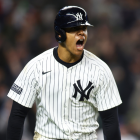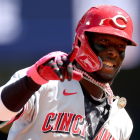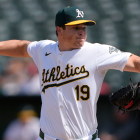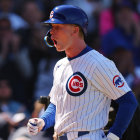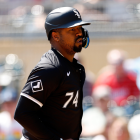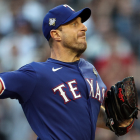Despite not making a single trade or free agent signing, the San Francisco Giants have made one of the most significant moves of the young 2018-19 offseason. Earlier this month the Giants hired Farhan Zaidi away from the rival Dodgers. Zaidi's official title is president of baseball operations, and he's expected to hire a general manager in coming weeks.
The Giants revamped their front office after going 64-98 in 2017 and 73-89 in 2018. In a vacuum, a nine-win improvement is quite good. When you're going from 64 wins to 73 wins, it's meaningless. They were still well short of the postseason. I admire the Giants for adding Evan Longoria and Andrew McCutchen and going for it. It didn't work out. Now Zaidi has to pick up the pieces.
The No. 1 item on Zaidi's plate: Madison Bumgarner's future. The Giants picked up Bumgarner's no-brainer $12 million club option for 2019 earlier this offseason and, one year from now, Bumgarner will be eligible for free agency. That's why he's been mentioned in trade rumors the last few months. Zaidi was of course asked about a potential Bumgarner trade during his introductory press conference.
"Where we are, everything has to be on the table in terms of how we move this team and roster forward," Zaidi said. "...The next World Series team for the San Francisco Giants is probably going to look a little bit different than the team that won in 2014, so as we start thinking about moves, we're going to have to at least consider it through that lens."
The easy move -- and a completely justifiable move -- would be signing Bumgarner to a contract extension that keeps him in San Francisco the rest of his career. He's a franchise icon, truly, and you don't let those guys just walk away. Stephen Strasburg's seven-year, $175 million contract seems like a decent starting point. Bumgarner wouldn't be wrong to ask for $200-plus million.
Re-signing Bumgarner would be perfectly reasonable. At the same time, he turns 30 in August, and the Giants appear headed for some lean years as Zaidi gets the organization back on its feet. The rest of Bumgarner's prime years could be spent on a non-contender. By time the Giants are ready to win again, he might be in decline and be more a liability than an asset.
Furthermore, Bumgarner is already starting to show some signs of decline and that is in no way surprising for someone closing in on his 30th birthday with over 1,700 big league innings on his arm. Bumgarner's strikeout rate is declining and his hard contact rate allowed is increasing. These trends are less than ideal:
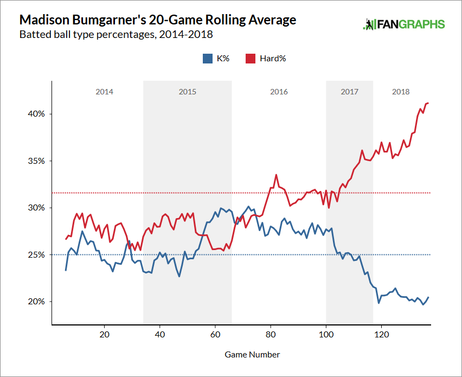
Despite the declining strikeout and hard contact rates, Bumgarner did throw 129 2/3 innings with a 3.26 ERA (119 ERA+) this past season, so he remains quite effective. The question the Giants have to ask themselves is how much longer will he remain effective? Long enough to justify a huge extension? Or is his Felix Hernandez-esque decline right around the corner?
Bumgarner's trade value will likely never again be as high as it is right now because he's closing in on free agency. Trade him this offseason and the other team gets Bumgarner for a full season. Wait until the trade deadline, and the other team only gets him for two months, which equals 10-12 starts. Teams won't pay as much for a partial season of any player as they would a full season. Look at Manny Machado. He could've fetched far more last winter than he did at the deadline.
The decision to trade a player like Bumgarner is made at the ownership level, not in the front office. Zaidi and his staff could -- and may -- recommend trading Bumgarner to ownership, but, ultimately, it's ownership's call. Trading an icon like Bumgarner may not sit well with them, not after back-to-back losing seasons and with attendance dipping:
- 2015: 3,375,882 (41,678 per game)
- 2016: 3,365,256 (41,546 per game)
- 2017: 3,303,652 (40,786 per game)
- 2018: 3,156,185 (38,965 per game)
The Giants dipped under 40,000 fans per game this past season for the first time since 2010, which came on the heels of five consecutive losing seasons. Trading a player as popular as Bumgarner could spook ownership. Teams and fans are more willing to embrace rebuilds now than ever before, but trading a guy like Bumgarner is much different than trading most veterans.
At the same time, there are several reasons to trade Bumgarner. He is starting to show some signs of decline and signing him to a big long-term extension probably isn't the wisest move when the Giants aren't a tweak or two away from contention. His remaining prime years could be spent toiling for a 70-something win club and where's the value in that?
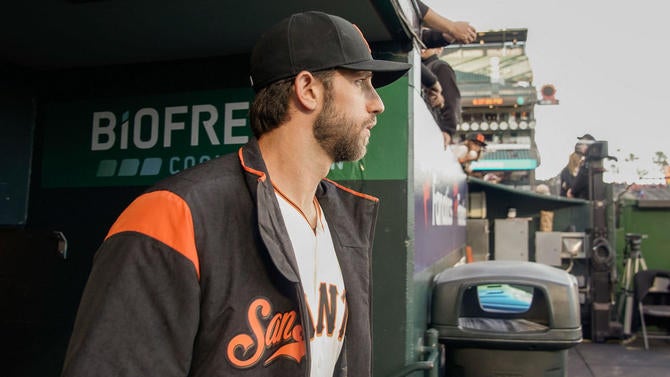
Also, the Giants need a youth infusion and Bumgarner would no doubt land the club several quality young players. No, his trade value is not as high as it was a few years ago, when he was under control for multiple years and at the top of his game, but it's still quite massive. Contenders like the Astros, Braves, Brewers, Nationals and Yankees would get involved in a hurry. A bidding war between contenders is a great way to drive up the price.
As Zaidi said, the next contending Giants team is "probably going to look a little bit different than the team that won in 2014." That means Buster Posey, who is working his way back from hip surgery, might be at first base rather than behind the plate. It could mean Brandon Crawford and Joe Panik are no longer the double play combination, and that Bruce Bochy isn't calling the shots from the dugout.
It could also mean Bumgarner is not at the front of the rotation, or in the rotation at all. With the Giants needing a youth infusion and Bumgarner in line for a massive extension as he approaches free agency, trading him is a way for Zaidi & Co. to expedite the rebuild. If Bumgarner had multiple years of control remaining, keeping him would be understandable. That is not the case, however, and now a trade appears to be the best course of action for the Giants.














